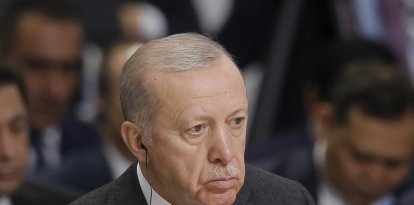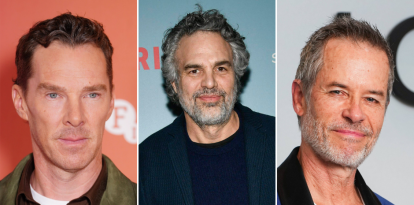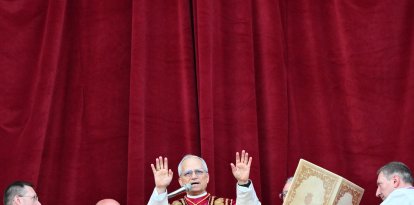35 years after El Caracazo in Venezuela : Was it the foundational turning point of the Bolivarian Revolution?
As if out of nowhere, the Caracazo protests were the decisive spark that Chavismo would use to burst onto the political scene.

Caracazo | Wikimedia Commons (ZiaLater)
Some say it exploded in Guarenas, a satellite city of Caracas. Others said it was in Guatire, also a few kilometers from the capital. The truth is that there is no certainty about where or how it started. And that's just the beginning of the mysticism of El Caracazo, the social insurrection that precisely 35 years ago made the newly sworn-in government of Venezuela tremble.
A few days before February 27, Carlos Andrés Pérez – who had comfortably won the Venezuelan elections in December 1988 – assumed the Presidency. Pérez, who had already been president of Venezuela between 1974 and 1979, was remembered as the father of excessive prosperity and an economic boom. In '88, Venezuelans hailed Pérez, who now took over a worn-out country that needed intense economic reforms. The new government, aware of this, tried to leave behind the rentier and statist model and embrace the liberalization of the economy.
Backed by a squad of prestigious technocrats, Pérez promoted a set of economic reforms that proposed deregulating the economy, lifting subsidies, unfreezing prices and privatizations. The local left described the reforms as a harmful shock package.
On February 26, the increase in oil prices became effective, and that same week, the bus drivers agreed with the Ministry of Transportation to increase the transportation rate, which had been frozen for two years—an almost invisible increase.
Those who claim that El Caracazo started in Guarenas or Guatire start from the hypothesis that it was a spontaneous insurrection. Like fire rising from an indiscernible ember, the anger quickly spread until it took over the streets of all the major cities in Venezuela. After three days of riots, looting and lots of violence, the events left more than 200 people dead — unofficial figures speak of up to 400 deaths.
The foundational turning point
At the time of El Caracazo, Hugo Chávez was a major in the Army and had been appointed as an assistant to the Defense of the Miraflores Palace, the headquarters of the Presidency. By then, Chávez was already a prolific conspirator who had founded years ago, in 1982, the Bolivarian Revolutionary Movement 200, with the aim of, one day, rising up.
According to Chávez and his group of conspirators—composed, among others, by Raúl Isaías Baduel, Jesús Urdaneta Hernández and Felipe Acosta Carlés— Venezuela needed urgent change. Influenced by leftist groups, they saw the Cuban Revolution as a moral north star and aspired to emulate the island's achievements in Venezuela.
Therefore, for Chávez's group, the El Caracazo protest was providential. As if they had encouraged it, it was perfect for them to strengthen the story on which the Bolivarian Revolution would later be based: the people, fed up, took to the streets to demand what was theirs, and the tyrannical government repressed it, in favor of the interests of foreign powers and the International Monetary Forum. It is a fictional story, meticulously sculpted but easy to market.
Hugo Chávez told Ignacio Ramonet, for his book of interviews, something along these lines: The Caracazo encouraged us because we realized that in Venezuela there were not only deep fissures and social injustices, but that we also had a government at the head that had lost all legitimacy.
It is this notion that the government had become a dictatorship by repressing a supposedly starving people that sustains the motivations for the bloody attempted coup d'état with which Hugo Chávez would debut in politics on February 4, 1992.
The Bolivarian Revolution and the Chavista movement may consider other founding milestones. But without El Caracazo, much of the Chavista ecosystem and imagination could not have been conceived. Precisely, the concept of a people demanding what is theirs, what belongs to them, is what the Chavista government's policies, such as expropriations or controls, would later be based on.
Spontaneity versus organization
For the Chavista story to work, it needed to sell the thesis of the spontaneity of February 27. A lot depends on the imaginary that has arisen in Venezuela in the last 30 years. However, data and facts mitigate the premise that El Caracazo was born organically.
In her book about the Government of Carlos Andrés Pérez, "The Rebellion of the Shipwrecked," the journalist Mirtha Rivero talks about how El Caracazo did not begin in one place, in Guarena or Guatires, but rather it occurred simultaneously in several neighborhoods of Caracas. As if it had been coordinated, public transport users in several areas decided to rise simultaneously.
On the other hand, Rivero speaks of Intelligence reports before the Caracazo that warned of the imminence of a social implosion, agitated by extreme left groups.
In another profound investigation for a book, the writer Thays Peñalver collects facts and testimonies about the Caracazo that help dismantle the spontaneity of the matter. In his work "The Conspiracy of the 12 Strikes," Peñalver writes: "In Venezuela the Federation of Guarenas Neighborhoods, which brought together all the neighborhood associations (...) was there until two in the morning printing pamphlets that he immediately distributed in the streets. Neighborhood associations had previously been called to mobilize early to 'take over' the passenger terminal. According to the story of one of the leaders who planned that 'spontaneous movement,' the statement delivered to the people starting at four in the morning encouraged passengers to 'not pay the increased fare.'"
More reports are piling up: there were foreign snipers in the neighborhoods, shooting at the population, as revealed by the Caracas correspondent of the newspaper ABC; The newspaper El Nacional talks about detained foreigners.
Some even go so far as to say, like General Carlos Peñaloza, who at the time was the Chief of the Army Staff, that the foreigners present in Venezuela during El Caracazo were Cubans and that much of that logistics had been imported a few weeks before, when, during the inauguration of Carlos Andrés Pérez, Fidel Castro traveled to Caracas with an exaggerated entourage.
This last hypothesis has gained strength with the testimonies of many more witnesses who attest to the presence of Cubans in Caracas on the eve of El Caracazo.
The truth is that for a popular, presumably spontaneous, insurrection of housewives and workers, it ended up being a tremendously bloody episode in the history of Venezuela. For the left and for Chavismo, this is due to the government's repression. However, press reports and testimonies suggest otherwise.
"While in Caracas, buses were burned in the same way as happened in other countries, motorized vehicles entered supermarkets, stores and supplies in general to encourage the looting of passers-by who were going to work. (...) those here in Venezuela, who copied the destabilizing model, decided to open the Santamarías before our eyes with the deplorable slogan: 'Popular looting!'" writes Thays Peñalver.
The model is still valid today when we talk about the recurring popular insurrections, apparently spontaneous, against necessary market reforms, as has happened in Chile, Colombia, Ecuador and seems imminent in Argentina.
Ultimately, as if coming out of nowhere, El Caracazo was the decisive element of the story with which Chavismo would burst into politics to win over Venezuelans. That revanchist, looting spirit that brought Chávez to power still functions today as a systematic practice of a perverse model.

























